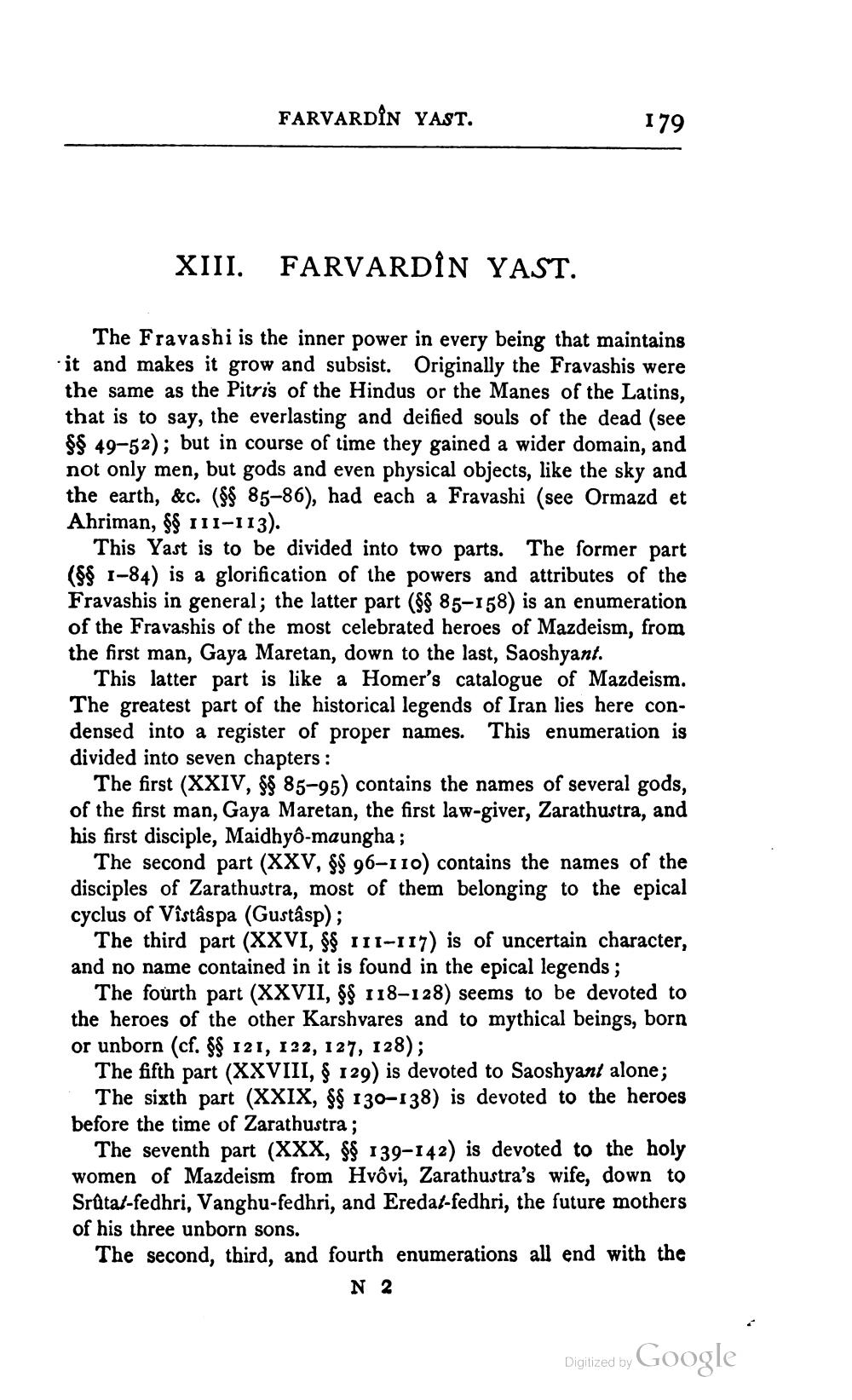________________
FARVARDÎN YAST.
179
XIII. FARVARDIN YAST.
The Fravashi is the inner power in every being that maintains it and makes it grow and subsist. Originally the Fravashis were the same as the Pitris of the Hindus or the Manes of the Latins, that is to say, the everlasting and deified souls of the dead (see $$ 49-52); but in course of time they gained a wider domain, and not only men, but gods and even physical objects, like the sky and the earth, &c. ($ 85-86), had each a Fravashi (see Ormazd et Ahriman, $$ 111-113).
This Yast is to be divided into two parts. The former part (S$ 1-84) is a glorification of the powers and attributes of the Fravashis in general; the latter part ($ 85-158) is an enumeration of the Fravashis of the most celebrated heroes of Mazdeism, from the first man, Gaya Maretan, down to the last, Saoshyant.
This latter part is like a Homer's catalogue of Mazdeism. The greatest part of the historical legends of Iran lies here condensed into a register of proper names. This enumeration is divided into seven chapters:
The first (XXIV, $$ 85-95) contains the names of several gods, of the first man, Gaya Maretan, the first law-giver, Zarathustra, and his first disciple, Maidhyô-maungha ;
The second part (XXV, $$ 96–110) contains the names of the disciples of Zarathustra, most of them belonging to the epical cyclus of Vîstâspa (Gustâsp);
The third part (XXVI, SS 111-117) is of uncertain character, and no name contained in it is found in the epical legends;
The fourth part (XXVII, SS 118–128) seems to be devoted to the heroes of the other Karshvares and to mythical beings, born or unborn (cf. $$ 121, 122, 127, 128);
The fifth part (XXVIII, § 129) is devoted to Saoshyant alone;
The sixth part (XXIX, $$ 130-138) is devoted to the heroes before the time of Zarathustra ;
The seventh part (XXX, $$ 139–142) is devoted to the holy women of Mazdeism from Hvovi, Zarathustra's wife, down to Srutat-fedhri, Vanghu-fedhri, and Eredat-fedhri, the future mothers of his three unborn sons. The second, third, and fourth enumerations all end with the
N 2
Digitized by Google




